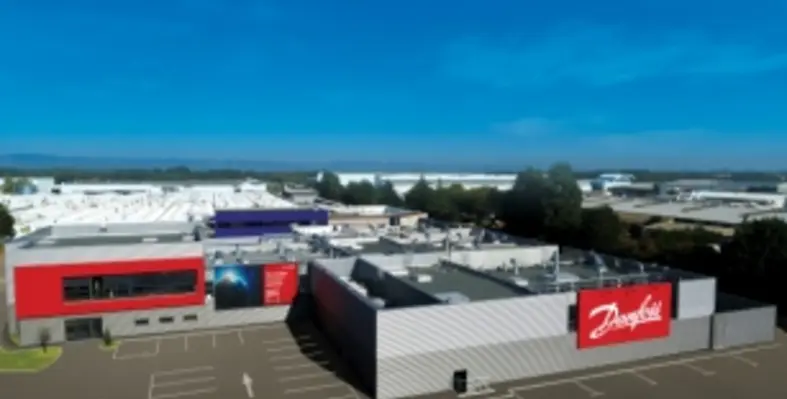Luigi Zamana, senior marketing director at Danfoss Commercial Compressors, and Alexander Abrass, sales director at Danfoss Cooling Segment for the Middle East and North Africa (MENA), speaks with Technical Review Middle East (TRME) about how the expansion of its ATEX flammable refrigerant lab ? the first of its kind in Europe ? will keep Danfoss ahead in an ever-changing industry
Technical Review Middle East (TRME): Please tell us more about the extension of Danfoss? ATEX flammable refrigerant lab?
Alexander Abrass (AA): The ATEX flammable refrigerant lab for compressors is now the largest in the world. It reaches to 3,000 sq m ? six times its original size. It is near Lyon, France, where our main R&D and manufacturing site for commercial compressors is located. Here, Danfoss tests new generations of scroll and reciprocating compressors with alternative refrigerants. The ATEX certification means that the building and working processes have been designed specifically for explosive atmosphere conditions (ATEX) and qualify for management of flammable refrigerants.
TRME: What is the relevance of the new ATEX lab in the changing world of refrigerants?
Luigi Zamana (LZ): It is very relevant because different countries have different time schedules for installing flammable/low-GWP refrigerants in their systems. Even though we don?t know exactly what that refrigerant will be and for what application, we know for sure that 10 years from now, they are going have low GWP (global warming potential), which will either be slightly or very flammable. This is the reason why we decided to make a flammable lab, so whatever the end solution will be we are going to be ready for it. In the meantime, we are continuing to work with our customers to develop solutions. If we don?t do this work up front right now to minimise the disruption to our customers, smaller companies, in particular, could go out of business.
TRME: What regions will the new lab cater to?
LZ: It will cater to Europe, Africa and the Middle East, but we are a global site.
TRME: What equipment standards are required for flammable refrigerants in the Middle East and Africa?
LZ: There are currently no equipment standards for the Middle East and Africa. Neither of these markets follow the F-Gas regulation like in Europe, which put in place an HFC (hydrofluorocarbons) phase-down from 2015 to 2030, banning high GWP refrigerants. The Middle East is included in the Kigali Amendment of the Montreal Protocol. The phase-down of the Montreal Protocol was established 20 years ago for the HCFC R22, which has already been phased out in the EU and is nearly finished in the USA and other developed countries. Then there was an amendment made in Kigali, Rwanda and they introduced the GWP to the Montreal Protocol, which has different timings of the HFC phase-down for different countries. The Middle East is in the same group as other areas where the first 10 per cent step down of high GWP refrigerant will not be until 2032. R22 is still the most widely used refrigerant used in the region. In Africa, the phase-down deadline is 2029.
TRME: What is the general attitude towards the compliance of these new refrigerants in the Middle East?
AA: The general attitude is changing but it is very slow, and there is scepticism in the Middle East towards adopting flammable refrigerants. It will take time for local governments to develop these low GWP standards. At the moment, people want to watch what other countries are going to do and then follow suit, and are counting on us to guide them through this transition. Saudi Arabia, which is one of the biggest markets, will be the last country to adapt their standards because they are not making it a priority at the moment and are still using R22. Nevertheless, there are OEMs which want to comply with the European standards to improve the efficiency of their equipment in order to enter multiple markets. Jordan?s Petra Engineering Industries Co., which specialises in heating, ventilating and air-conditioning (HVAC) systems, exports a lot of their systems to Europe and to the USA. They are using R410A and R32 as well as introducing R1234 into their large chillers because they want to penetrate other markets.
TRME: What will be the market trends for flammable refrigerants in the Middle East?
AA: R32 will be commonly used for packaged units, which is a blend/low GWP refrigerant, and R1234 will be used for the larger chillers, which is a blend with HFCs that are slightly flammable. This is the trend major manufacturers are trying to focus on and what Europe is working towards as well.
TRME: Do you think flammable refrigerants are commercially-viable in terms of cost-effectiveness?
LZ: Customers are now demanding to have these alternative refrigerants to bring down the cost of the refrigerant. At the moment, the cost of refrigerants is sky-high at 50/60 euro per kilogramme. It used to be six euros, it is now ten times higher now. Customers want this alternative refrigerant to bring down the costs of the refrigerant in order to use a part of their money to invest in their system to future-proof it for a certain amount of years.
TRME: What are the risks involved in both residential and commercial markets?
LZ: In residential markets, the flammable/ slightly flammable refrigerants are used in split systems in small quantities ? the limit is 150gm ? so, the impact is minimal if there is going to be a leak, the risk is very small. With commercial systems, there are much bigger refrigerant charges where many kilogrammes of refrigerant are used. But as the systems are already packaged there is no installation that can expose you as the end user to the flammable refrigerant.





